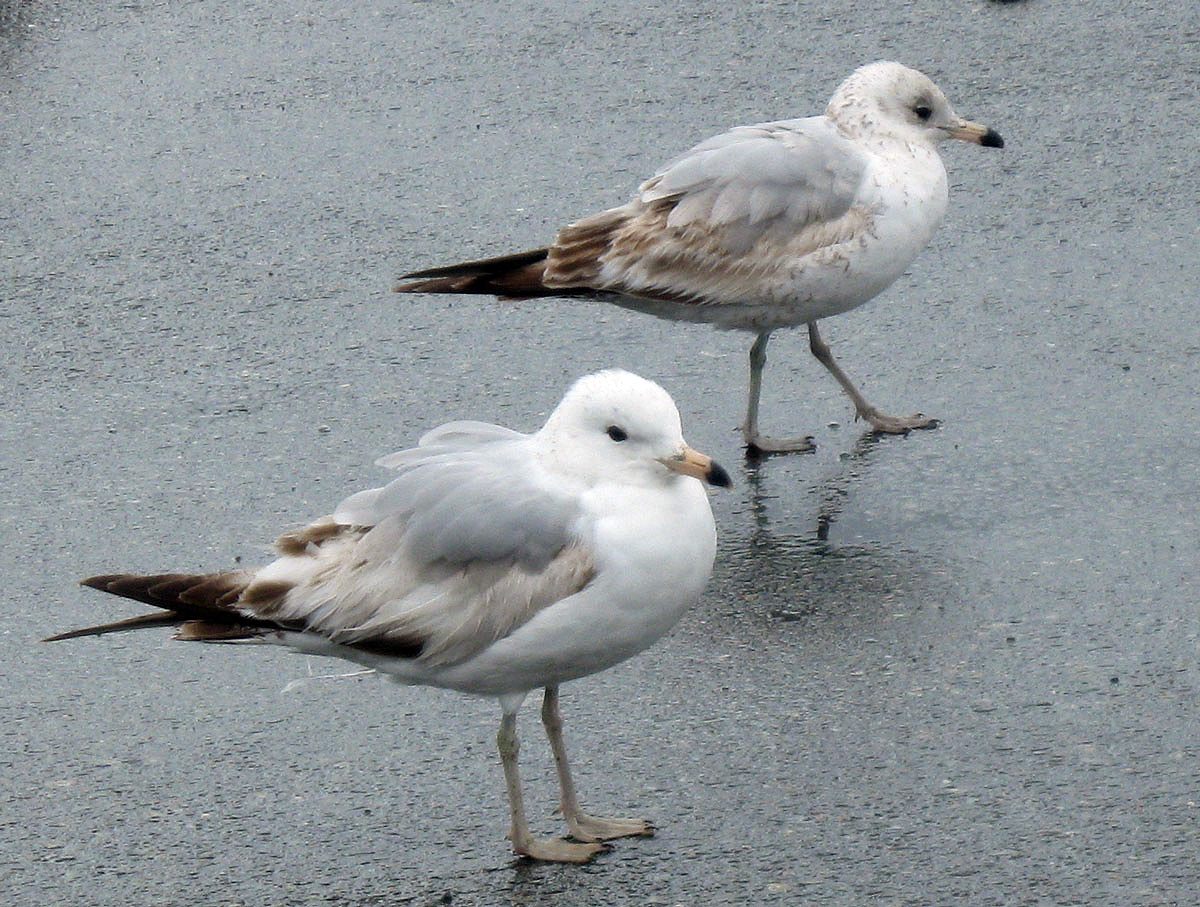Coordinators:
Keith Mueller
Amar Ayyash
Mars Muusse
Index ORG
ring projects
PDF's
1cy June
1cy July
1cy Aug
1cy Sept
1cy Oct
1cy Nov
1cy Dec
2cy Jan
2cy Feb
2cy March
2cy April
2cy May
2cy June
2cy July
2cy Aug
2cy Sept
2cy Oct
2cy Nov
2cy Dec
3cy Jan
3cy Feb
3cy March
3cy April
3cy May
3cy June
3cy July
3cy Aug
3cy Sept
3cy Oct
3cy Nov
3cy Dec
adult Jan
adult Feb
adult March
adult April
adult May
adult June
adult July
adult Aug
adult Sept
adult Oct
adult Nov
adult Dec |
Ring-billed Gull delawarensis 1st cycle (2CY), April 18 2010, Boston, MA. Picture: David Sibley.
See David's site.
The variation in appearance in 1st cycle April birds comes from four main sources, which all interact:
- the intensity (darkness) of feather markings on retained juvenal feathers
- the degree of wear and fading of the feathers (which is related to darkness since pale feathers wear and fade more quickly)
- the extent of dark markings on new feathers on the head and body (which seems to be related to the darkness of the juvenal feathers)
- the extent of the spring molt which may or may not include wing coverts and tertials by this date
In the April pictures (and below), the whiter bird in the foreground has excessively worn, whitish wing coverts retained from last summer, clean white head and breast of presumably new feathers grown in the last few months, but is otherwise nearly identical to the bird behind.
Below: Two Ring-billed Gulls the same age at about the same stage of molt. The variation in these two birds arises mainly from the extent of dark markings on the newly molted head and breast feathers and the degree of wear and fading on the old retained juvenal wing coverts and tertials.

|
 delawarensis Ring-billed Gull
delawarensis Ring-billed Gull